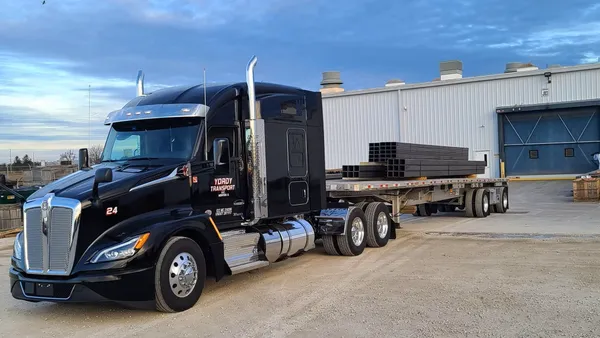Dive Brief:
- The Port Authority of New York and New Jersey (PANYNJ) has undertaken a $23.7-million agreement with Cross Harbor Partners to complete a Tier II Environmental Impact Statement on two preferred options of freight movement across New York Harbor, RT & S reported. The study is likely to last three years.
- The options under consideration are the construction of a cross-harbor freight tunnel and the expansion of PANYNJ's existing railcar float operation.
- The rail tunnel option will require the construction of a freight tunnel under the New York Harbor running approximately four miles from Jersey City, N.J. to Brooklyn, N.Y. The railcar float option would expand the existing carfloat system. It would include new transfer bridges, carfloats, locomotives and tracks.
Dive Insight:
As the transport industry struggles with various shortages and infrastructure continues to crumble, alternative methods of carriage are needed.
Ports are pushing hard for transport alternatives for freight movement due to subpar or failing infrastructure, and an over-reliance on single forms of transport that strain already exhausted systems such as Dam and Locks 52 and 53 on the Ohio River.
The struggling port of New York and New Jersey is no exception to the condition of being over-burdened, and causing excess strain on the surrounding environment. "New York New Jersey Rail, LLC’s carfloat operation plays a significant role in moving goods across New York/New Jersey Harbor today,” Port Authority’s Port Director Molly Campbell told Supply Chain Dive.
"The Tier II study we are about to undertake will examine the costs and benefits of two alternatives that would improve the movement of goods across the harbor: one being an enhanced carfloat operation, and the other being a freight rail tunnel," said Campbell. "These options are beneficial to the environment as it will help reduce roadway congestion by taking trucks off the road, which in turn reduces the amount of pollution emitted into the environment."
The review will include outreach to stakeholders, including elected officials and the public. Both costs and benefits of each alternative will be considered in hopes of reducing roadway congestion currently attributed to goods movement across the New York/New Jersey Harbor.
The recommended alternative would require additional funding for the next phase of development, which entails preliminary engineering.














